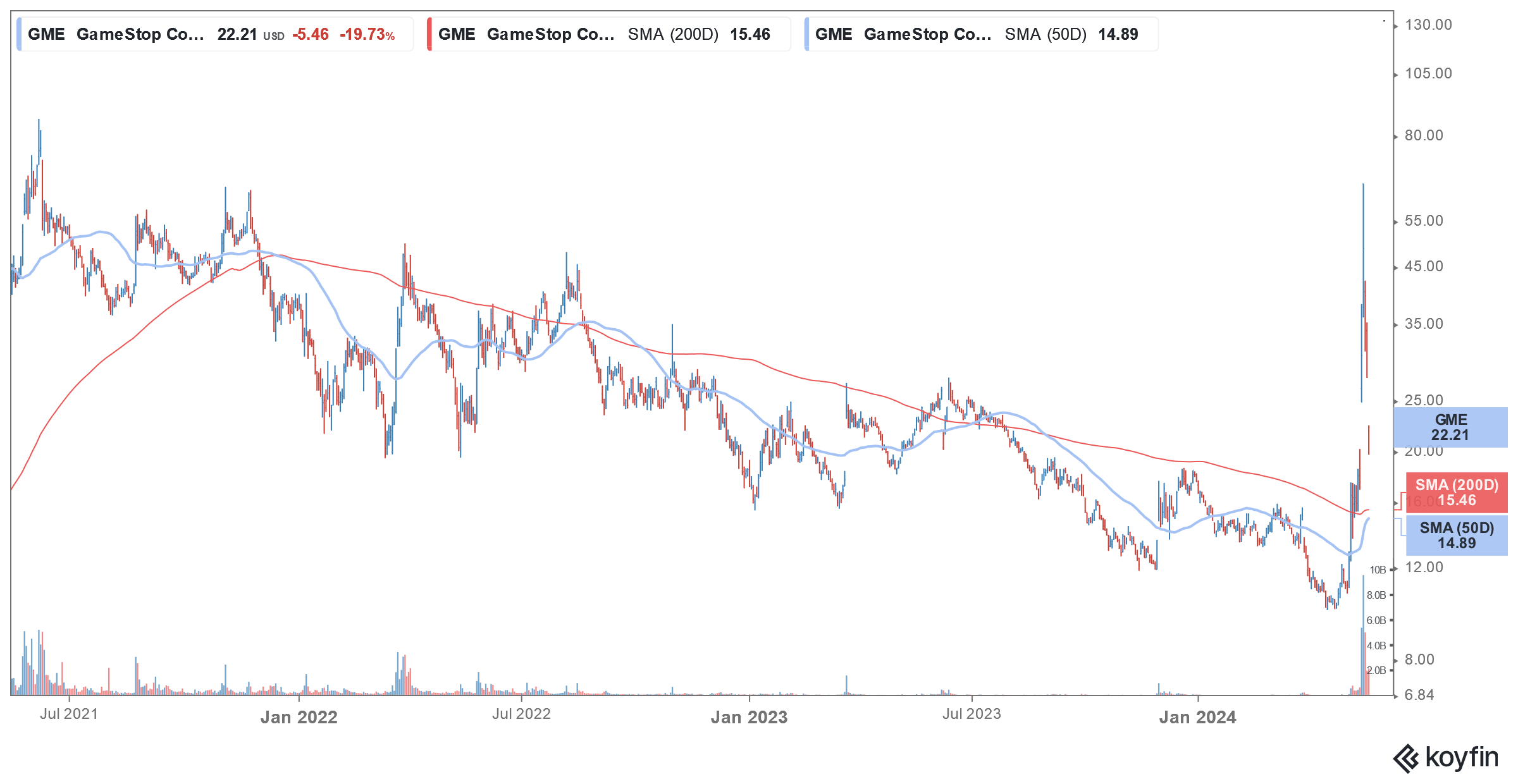
After a break of a few years, the meme stock mania returned to Wall Street and names like GameStop and AMC rallied smartly earlier in May. The rally was driven after “Roaring Kitty” whose real name is Keith Gill shared a cryptic tweet.
While the rally has since faded, companies capitalised on them by issuing new shares, just as they did the last time.
Earlier this week, AMC Entertainment that’s saddled with billions of dollars of debt, issued shares worth $250 million amid the meme stock mania. Now, GameStop, which turned net debt positive during the previous meme stock rally, has filed to sell additional shares in an at-the-market offering.
In the 2021 meme stock rally also, companies capitalised on the short squeeze and went on a capital raising spree. Zomedica, Sundial Growers, and Naked Brands issued new shares in a frenzy with almost complete disregard for dilution.
Meme companies go on a share-selling spree during rallies
The capital raise was a lifesaver for meme companies and some wouldn’t have survived if not for the cash they raised during that period. But then, even the massive capital raise wasn’t any surety of long-term survival.
Naked Brands for instance eventually announced a reverse merger with Cenntro Electric Group while Zomedica’s current market cap is just about similar to the $173.5 million that it raised through share sales in 2021.
Sundial Growers is an exception here as the company, which was predominantly a cannabis company turned into an investment company and the marketable securities and investments on its balance sheet are just about similar to its market cap.
Are meme companies to blame?
Almost all the meme companies are loss-making and need cash to fund their losses. While issuing new shares means dilution and that was precisely the reason AMC shareholders previously blocked the company’s share sale plan, selling shares at higher prices somewhat blunts the dilution.
Simply put, when companies sell shares at inflated prices they need to issue fewer shares to raise the desired cash. We can think of them being the opposite of share buybacks when companies aggressively repurchase their shares when prices are low and they find them undervalued.
Former SEC chief Clayton sees a possible market manipulation
Former SEC chief Jay Clayton believes that Gill could have possibly committed market manipulation with his tweets that “triggered…euphoric and speculative buying among the retail community.” However, he said that “facts and circumstances around the publication of the tweet,” would need to be considered while determining whether Gill’s activity was illegal.
According to Clayton, “There is nothing illegal about saying I like a stock” He however added, “There are things illegal about saying I like a stock and taking activity in the marketplace that’s designed to drive behavior, indicate that prices are rising.”
Was this meme stock rally different?
Meanwhile, the rally in meme stocks is somewhat different from the last time. Firstly, the price action wasn’t as extreme as we saw in 2021 which took GameStop shares past $500 at one point. Also, the rally has fizzled away much sooner than in 2021 when it lasted for a few months.
The spike this time looks less spontaneous and analysis from Interactive Brokers market strategist Steve Sosnick shows massive buying activity in deep ou-of-the-money call options on GameStop before the rally.
“A suspicious person might wonder why “Roaring Kitty” chose to return to social media today. Given my past experience in analyzing the periodic bouts of meme stock activity, consider me suspicious,” said Sosnick in its note.
Short sellers lost again amid the meme stock rally
While short sellers (mostly institutions) lost yet again amid the meme stock rally, they too participated in the rally this time, according to Vanda Research. According to Rick Meckler, partner at Cherry Lane Investments, “the short sellers three years ago were completely surprised by the magnitude of the mass purchases and ultimately overwhelmed by the size of the short squeeze.”
He however added, “They have likely learned from that experience and left themselves less exposed thereby reducing the potential for extended upward pressure.”
GameStop shares are still higher than what they were before the rally
Meanwhile, looking at the price action, while GameStop shares have fallen sharply from their May highs, they are still about twice what they were late last month. The company’s core business meanwhile continues to sag and its preliminary filings said that its revenues fell YoY in the fiscal first quarter.
Analysts continue to be bearish on GameStop and Wedbush analyst Michael Pachter who has a $7 target price on the shares believes the company is not in a position to move to profitability, citing its $6 million loss last year.
“We expect them to lose $100 million a year going forward. It’s a race to see if they can close stores fast enough to limit losses, but they have no plan that would suggest they can grow revenues or profits, and their core business is in decline,” said Pachter.


Question & Answers (0)